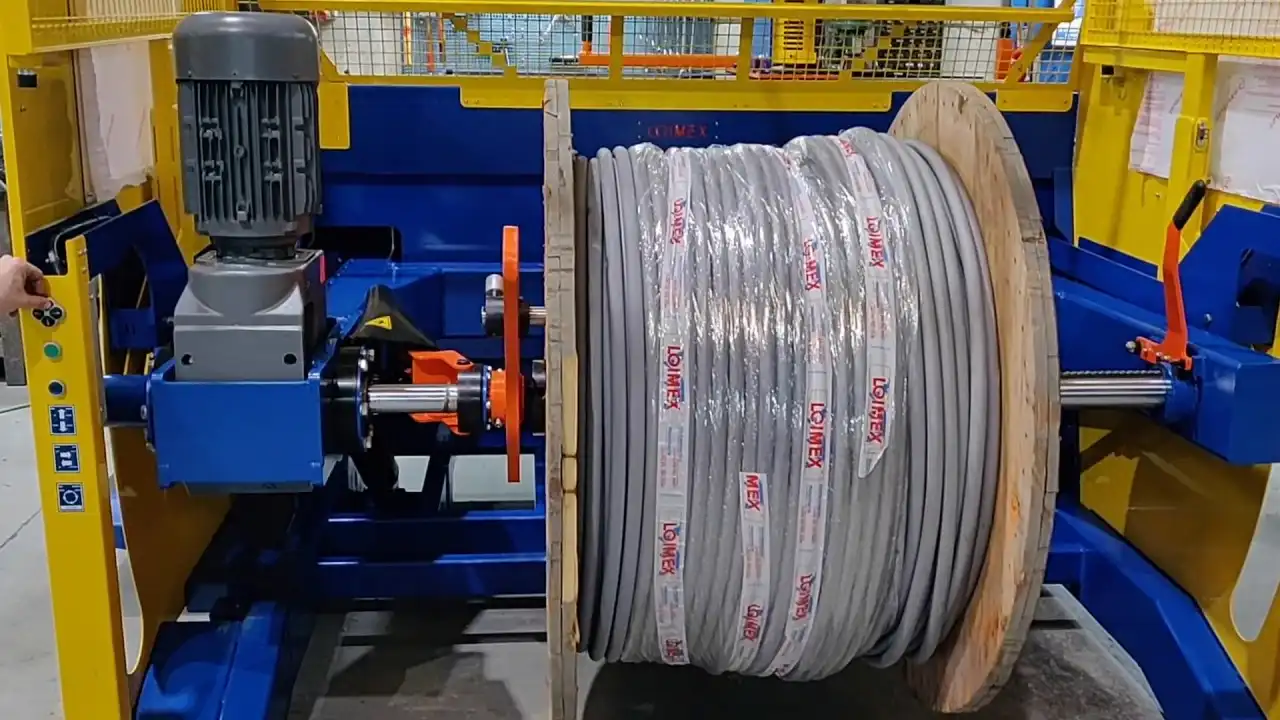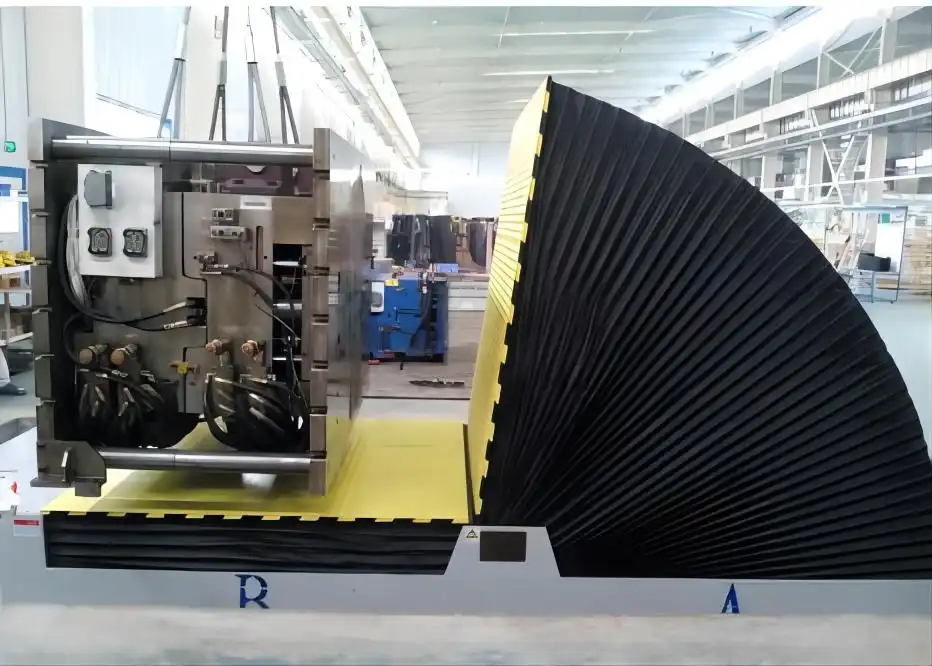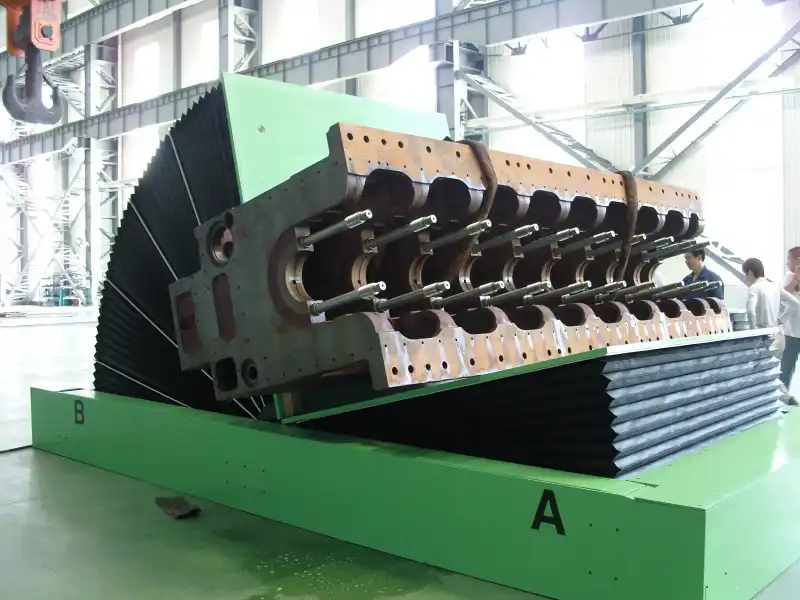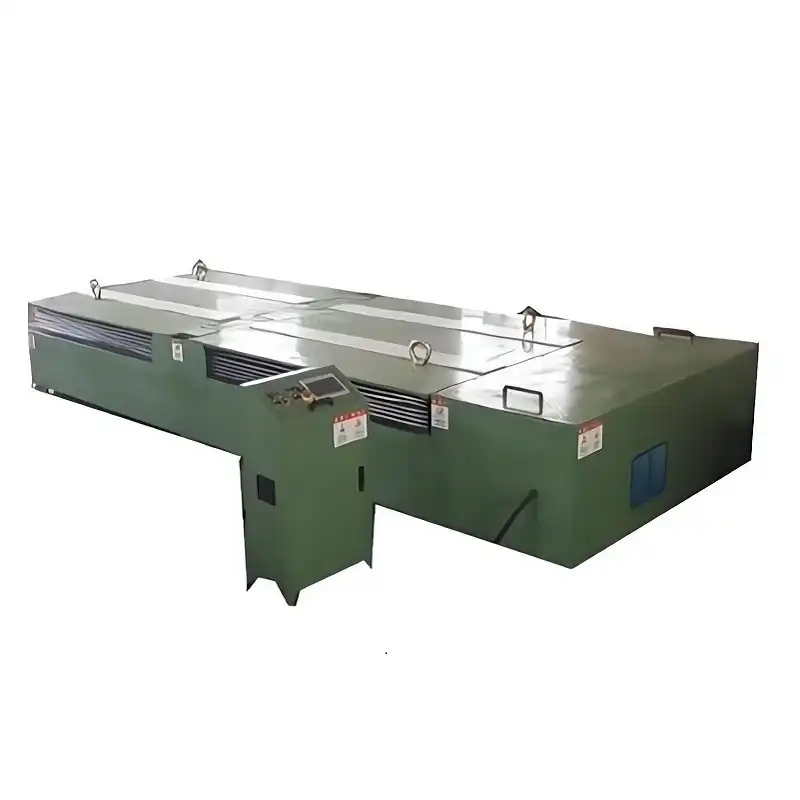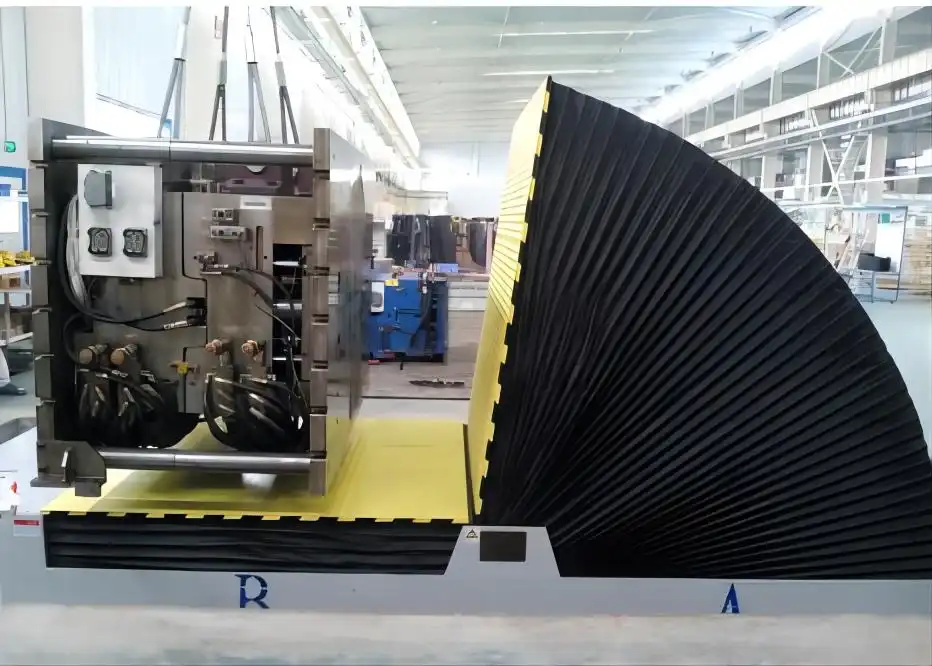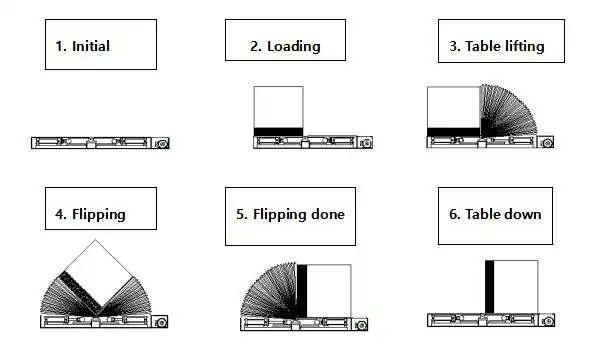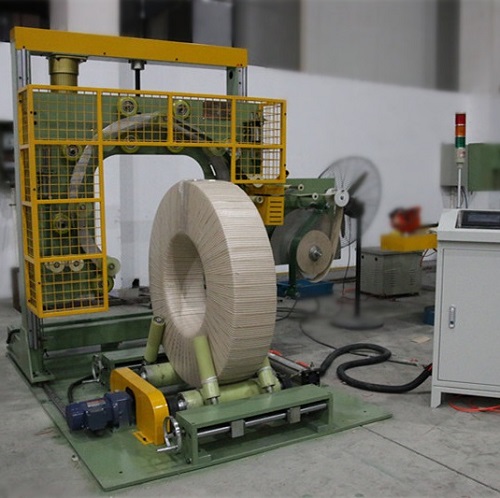Are you struggling with damaged edges, loose windings, or inefficient handling of your small-diameter slit coils? These issues not only lead to material waste but also increase operational costs and delay production. Imagine a streamlined process that ensures every coil is perfectly packaged, protected, and ready for its next step.
Optimizing packaging processes for small-diameter slit coils involves implementing automated systems and tailored techniques that ensure coil integrity, enhance handling efficiency, and reduce material waste. This includes using inner diameter supports, precision tension control during wrapping, and automated handling equipment designed for delicate coils. By focusing on these key areas, manufacturers can achieve significant improvements in both productivity and product quality.
The journey to optimized packaging doesn’t have to be complex. Let’s explore the essential strategies and technologies that can transform your small-diameter slit coil packaging from a bottleneck to a competitive advantage.
Enhancing Coil Integrity with Inner Diameter Support
Damaged inner diameters are a major headache when dealing with delicate slit coils. Think about the frustration of unwinding a coil only to find it’s collapsed or misshapen, rendering a portion of your material unusable. This problem is amplified with smaller diameters, where even slight distortions can compromise the entire coil.
Inner diameter support is crucial for maintaining the structural integrity of small-diameter slit coils during packaging. By utilizing specialized mandrels and support structures within packaging lines, manufacturers prevent coil collapse and ensure consistent shape retention. This minimizes material damage and ensures coils are ready for seamless downstream processing. Implementing robust inner diameter support is not just about protecting the coil; it’s about safeguarding your investment in precision-slit materials.
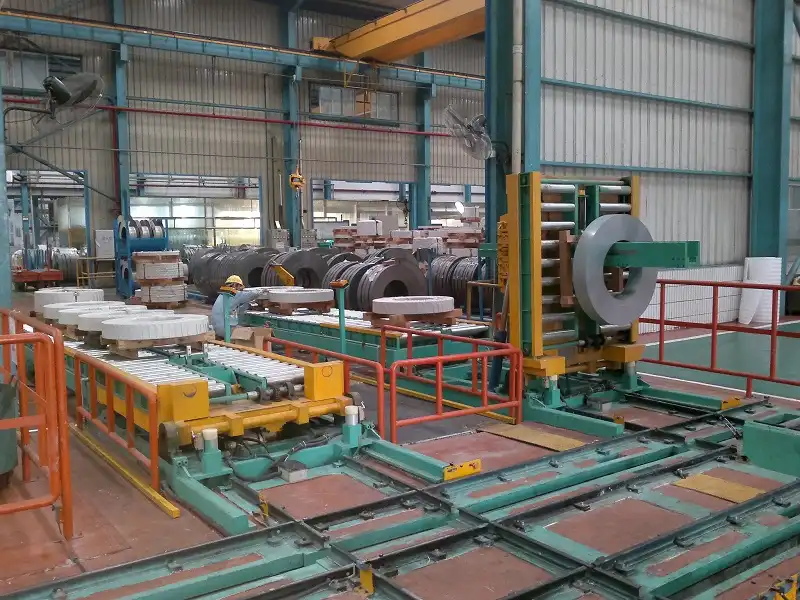
Dive Deeper: The Critical Role of Mandrel Technology
The mandrel, or expanding core, is the unsung hero of inner diameter support systems. It’s the foundation upon which successful small-diameter coil packaging is built. However, not all mandrels are created equal. Choosing the right mandrel technology is paramount to preventing coil damage and optimizing your packaging line’s performance. Let’s break down the key considerations:
Understanding Mandrel Expansion Mechanisms
Mandrels expand to grip the inner diameter of the coil, providing support during wrapping and handling. The expansion mechanism is critical and can vary significantly in design and effectiveness. Common types include:
-
Mechanical Wedge Mandrels: These use a wedge system, often actuated hydraulically or pneumatically, to expand segments of the mandrel outwards. They are robust and offer high gripping force, suitable for heavier coils but can sometimes exert uneven pressure on very thin gauge materials.
-
Link-Type Mandrels: These mandrels utilize a series of interconnected links that expand radially. They provide a more uniform expansion and gentler grip, ideal for delicate materials and smaller diameters.
-
Bladder-Type Mandrels (Pneumatic or Hydraulic): These use an inflatable bladder to apply pressure evenly against the coil’s inner diameter. They offer the most uniform and gentle support, crucial for ultra-thin gauge foils and sensitive alloys. However, they might be less suitable for extremely heavy coils due to pressure limitations.
Material Considerations for Mandrel Construction
The material of the mandrel itself also plays a vital role. It needs to be durable enough to withstand repeated use and the stresses of coil handling, yet also compatible with the coil material to avoid surface damage or contamination.
-
Steel Mandrels: Hardened steel mandrels offer maximum durability and are suitable for most common coil materials. However, they can be abrasive and might require protective sleeves for sensitive surfaces like polished aluminum or brass.
-
Aluminum Mandrels: Lighter and less abrasive than steel, aluminum mandrels are a good choice for softer coil materials. They also dissipate heat more effectively, which can be beneficial in high-speed packaging lines. However, they are less durable than steel for very heavy coils.
-
Composite Mandrels: Emerging composite materials offer a balance of strength, low weight, and non-abrasive properties. Carbon fiber and fiberglass composites are increasingly being used in high-performance mandrels, especially where minimizing inertia and maximizing speed are critical.
Precision and Tolerance in Mandrel Design
For small-diameter slit coils, precision is paramount. Even minor variations in mandrel diameter or concentricity can lead to uneven coil winding and potential damage. Mandrel manufacturers must adhere to tight tolerances during machining and assembly.
-
Diameter Tolerance: Mandrel diameter must be precisely matched to the specified inner diameter range of the coils being packaged. Oversized mandrels can stretch the coil ID, while undersized mandrels provide insufficient support.
-
Concentricity: Runout or eccentricity in the mandrel rotation can cause uneven tension and coil wobble during wrapping, leading to telescoping or edge damage. High-precision bearings and machining techniques are essential to minimize runout.
-
Surface Finish: A smooth, polished surface finish on the mandrel minimizes friction and prevents scratching or marking of the coil’s inner surface, especially important for coils with critical surface finish requirements.
Data-Driven Mandrel Selection
Choosing the optimal mandrel technology requires a data-driven approach, considering factors like coil material, gauge, weight, inner diameter range, and packaging line speed. A systematic evaluation process, as outlined in the table below, can guide manufacturers to the best mandrel solution for their specific needs.
| Factor | Mechanical Wedge Mandrel | Link-Type Mandrel | Bladder-Type Mandrel |
|---|---|---|---|
| Coil Weight Capacity | High | Medium | Low to Medium |
| Gauge Suitability | Medium to Heavy | Light to Medium | Ultra-Light to Light |
| Material Sensitivity | Medium | High | Very High |
| Diameter Range | Wide | Medium | Narrow |
| Expansion Uniformity | Medium | High | Very High |
| Durability | Very High | High | Medium |
| Maintenance | Moderate | Moderate | Higher (bladder wear) |
| Cost | Medium | Medium to High | High |
| Best Use Case | Heavy coils, robust materials | General purpose, delicate materials | Ultra-thin foils, sensitive alloys |
By carefully analyzing these factors and working with mandrel suppliers who offer customization and engineering expertise, manufacturers can optimize their inner diameter support systems, ensuring the highest level of coil integrity and packaging line efficiency. The right mandrel is an investment in preventing waste, improving quality, and ultimately, enhancing profitability.
Streamlining Operations with Multi-Coil Bundling
Handling individual small-diameter coils can be incredibly time-consuming and labor-intensive. Imagine workers manually transferring each coil from slitting to packaging, then to shipping – a process prone to errors, delays, and potential injuries. This fragmented approach not only reduces throughput but also increases the risk of damage to these delicate materials.
Multi-coil bundling dramatically improves the efficiency of packaging small-diameter slit coils. By grouping multiple coils into secure bundles, manufacturers reduce handling frequency, accelerate packaging processes, and enhance overall throughput. Automated bundling systems ensure consistent bundle size and tightness, further minimizing the risk of damage during handling and transit. Bundling isn’t just about speed; it’s about creating a more manageable and efficient workflow from slitting to shipment.

-Expanding on Multi-Coil Bundling for Enhanced Efficiency
Multi-coil bundling represents a significant leap forward in optimizing packaging processes for small-diameter slit coils. Beyond the basic benefits of reduced handling and increased speed, a well-designed bundling system offers a cascade of advantages that impact productivity, cost-effectiveness, and product quality. Let’s delve deeper into the key aspects of effective multi-coil bundling:
Automated vs. Manual Bundling: A Comparative Analysis
While manual bundling might seem like a lower initial investment, the long-term benefits of automation far outweigh the upfront costs, especially for high-volume operations. Let’s compare the two approaches:
| Feature | Manual Bundling | Automated Bundling |
|---|---|---|
| Speed & Throughput | Slow, limited by operator speed and fatigue | High, consistent speed, continuous operation |
| Labor Costs | High, requires multiple operators | Low, minimal operator intervention |
| Consistency | Variable bundle size and tightness, prone to errors | Consistent bundle size and tightness, high repeatability |
| Coil Damage Risk | High, manual handling increases damage potential | Low, automated handling minimizes damage risk |
| Material Usage | Potentially higher, inconsistent wrapping | Optimized material usage, precise wrapping control |
| Ergonomics & Safety | Poor, repetitive tasks, risk of injury | Excellent, reduced manual handling, safer operation |
| Scalability | Limited, difficult to scale with production volume | Highly scalable, adapts to increased production demands |
| Long-Term Cost | Higher due to labor, waste, and inefficiencies | Lower, ROI through reduced costs and increased output |
As the table clearly illustrates, automated bundling offers a compelling advantage across virtually every critical operational metric. While manual bundling might suffice for very low-volume or highly specialized applications, automation is the clear path to efficiency and profitability for most small-diameter slit coil producers.
Key Technologies in Automated Bundling Systems
Modern automated bundling systems incorporate a range of sophisticated technologies to ensure precise, efficient, and damage-free coil handling. These technologies include:
-
Robotic Pick-and-Place: Robots equipped with specialized grippers gently and accurately pick individual coils from the slitting line and place them into the bundling station, ensuring consistent orientation and spacing.
-
Vision Systems: Integrated vision systems inspect coils for defects, verify coil dimensions, and guide robotic placement, further enhancing precision and quality control.
-
Programmable Logic Controllers (PLCs): PLCs orchestrate the entire bundling process, synchronizing robot movements, wrapping mechanisms, strapping units, and conveyor systems for seamless operation.
-
Servo-Driven Mechanisms: Servo motors provide precise control over wrapping tension and strapping force, ensuring optimal bundle tightness without damaging delicate coils.
-
Automated Strapping & Wrapping: Bundling lines often include integrated strapping and wrapping stations that automatically secure and protect the bundled coils, using materials like steel or PET straps and stretch film or protective paper.
Designing a Bundling System for Small-Diameter Coils
When designing a multi-coil bundling system for small-diameter slit coils, several key factors must be considered:
-
Coil Size and Weight Range: The system must be designed to handle the specific dimensions and weight range of the coils being produced, ensuring appropriate gripper design, bundle size capacity, and structural robustness.
-
Material Sensitivity: For delicate materials, gentle handling is paramount. System design should prioritize soft-touch grippers, controlled acceleration and deceleration, and minimal contact points to prevent surface damage.
-
Throughput Requirements: The bundling system’s speed and capacity must be matched to the slitting line’s output to avoid bottlenecks and maintain production flow.
-
Bundle Configuration: Consider the desired bundle configuration – number of coils per bundle, stacking arrangement, and overall bundle dimensions – to optimize handling and downstream processing.
-
Integration with Existing Lines: Seamless integration with existing slitting and packaging lines is crucial. System design should account for material flow paths, control system compatibility, and space constraints.
By carefully considering these factors and leveraging the power of automation, manufacturers can transform their small-diameter slit coil packaging operations with multi-coil bundling, achieving significant gains in efficiency, productivity, and product quality. It’s an investment that pays dividends in reduced costs, faster turnaround times, and enhanced customer satisfaction.
Achieving Precision in Packaging with Centering Systems
Off-center winding, uneven wrapping, and misaligned straps are common culprits behind damaged coils and inefficient packaging processes. For small-diameter slit coils, even slight misalignments can lead to significant problems, compromising coil integrity and creating downstream processing headaches. Imagine the frustration of dealing with telescoping coils that jam production lines or unevenly wrapped bundles that are prone to unwinding during transit.
Precision centering systems are essential for achieving consistently high-quality packaging of small-diameter slit coils. These systems ensure that coils are perfectly centered during wrapping and strapping, resulting in even tension distribution, reduced edge damage, and improved package stability. By eliminating misalignment, manufacturers enhance package aesthetics, minimize material waste, and ensure coils arrive in optimal condition. Centering isn’t just about visual appeal; it’s about building quality and reliability into every package.
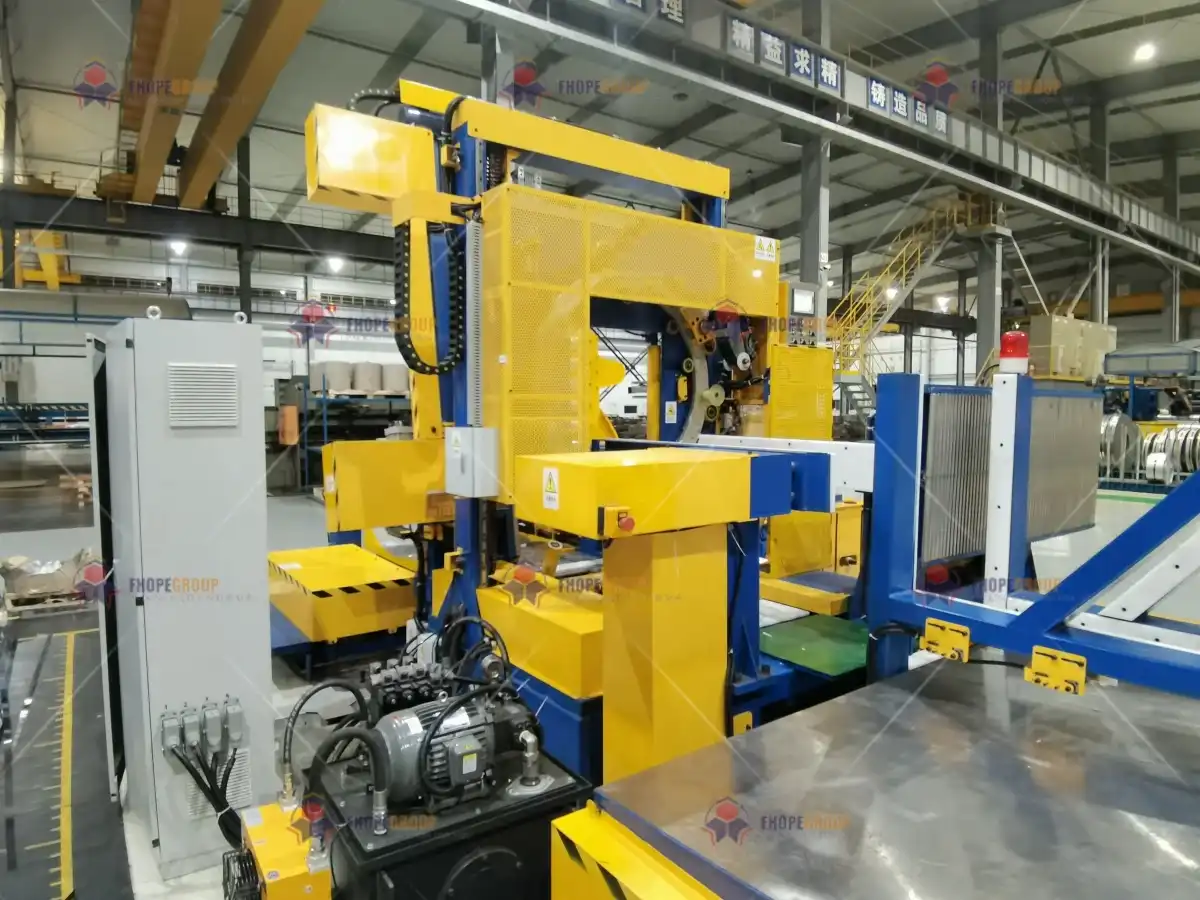
Technical Analysis: Advanced Centering Technologies for Coil Packaging
Achieving precision centering in coil packaging lines, especially for small-diameter slit coils, requires sophisticated technologies that go beyond simple mechanical guides. Modern centering systems leverage a combination of sensors, actuators, and intelligent control algorithms to ensure perfect coil alignment throughout the packaging process. Let’s delve into the technical details of these advanced systems:
Sensor Technologies for Real-Time Coil Positioning
Accurate centering relies on precise and real-time feedback about the coil’s position. Various sensor technologies are employed to monitor coil alignment and provide data for active centering adjustments:
-
Laser Sensors: Laser triangulation sensors are highly accurate and non-contact, making them ideal for measuring coil edge positions and detecting deviations from the center line. They provide rapid feedback and are robust in industrial environments.
-
Ultrasonic Sensors: Ultrasonic sensors offer another non-contact method for detecting coil edges. They are less sensitive to surface reflectivity than laser sensors and can work reliably even with oily or dusty coils.
-
Optical Encoders: Rotary encoders mounted on coil handling mechanisms (e.g., turntables, conveyors) provide precise angular position data, allowing the system to track coil rotation and identify any off-center movement.
-
Proximity Sensors (Inductive/Capacitive): These sensors detect the presence of the coil at specific points in the packaging line, confirming coil loading and triggering centering sequences.
Actuator Systems for Dynamic Coil Adjustment
Sensor data is only valuable when coupled with actuator systems that can dynamically adjust the coil’s position to maintain perfect centering. Common actuator technologies include:
-
Pneumatic Cylinders: Pneumatic cylinders offer fast and reliable linear motion for adjusting coil position. They are often used in centering arms or pushers that gently nudge the coil back to the center line.
-
Servo Motors with Linear Actuators: Servo-driven linear actuators provide highly precise and controlled linear motion. They offer greater accuracy and responsiveness than pneumatic cylinders, enabling finer centering adjustments.
-
Electromagnetic Actuators: Electromagnetic actuators, such as linear motors, offer extremely fast and precise positioning. They are often used in high-speed packaging lines where rapid centering adjustments are critical.
Intelligent Control Algorithms for Closed-Loop Centering
The heart of any advanced centering system is its control algorithm. These algorithms process sensor data and control actuators in a closed-loop feedback system to maintain perfect coil centering. Key algorithmic approaches include:
-
Proportional-Integral-Derivative (PID) Control: PID controllers are widely used in industrial automation for their robustness and effectiveness. They continuously adjust actuator output based on the error signal (deviation from center), aiming to minimize and eliminate centering errors.
-
Fuzzy Logic Control: Fuzzy logic controllers are well-suited for handling non-linear and complex systems. They can incorporate expert knowledge and adapt to varying coil characteristics and packaging conditions to optimize centering performance.
-
Adaptive Control: Adaptive control algorithms continuously learn and adjust control parameters based on real-time system performance. They can compensate for wear and tear, changes in coil material properties, and variations in operating conditions, ensuring long-term centering accuracy.
Data-Driven Performance Optimization
The effectiveness of a centering system can be quantified and optimized through data analysis. Key performance indicators (KPIs) include:
| KPI | Measurement Method | Target Value | Improvement Impact |
|---|---|---|---|
| Centering Accuracy | Laser sensor measurement of coil runout | < ± 0.5 mm | Reduced edge damage, improved winding quality |
| Correction Time | Time for centering system to adjust | < 0.2 seconds | Increased line speed, higher throughput |
| System Uptime | Percentage of operational time | > 99.9% | Minimized downtime, consistent production |
| Maintenance Frequency | Intervals between maintenance | > 6 months | Lower operating costs, reduced maintenance effort |
| Waste Reduction | Percentage decrease in rejected coils | > 15% reduction | Material savings, improved yield |
By monitoring these KPIs and using data to fine-tune control algorithms and system parameters, manufacturers can continuously improve the performance of their precision centering systems, achieving optimal packaging quality and efficiency for small-diameter slit coils. Investing in advanced centering technology is an investment in precision, consistency, and long-term operational excellence.
Vertical Integration for End-to-End Efficiency
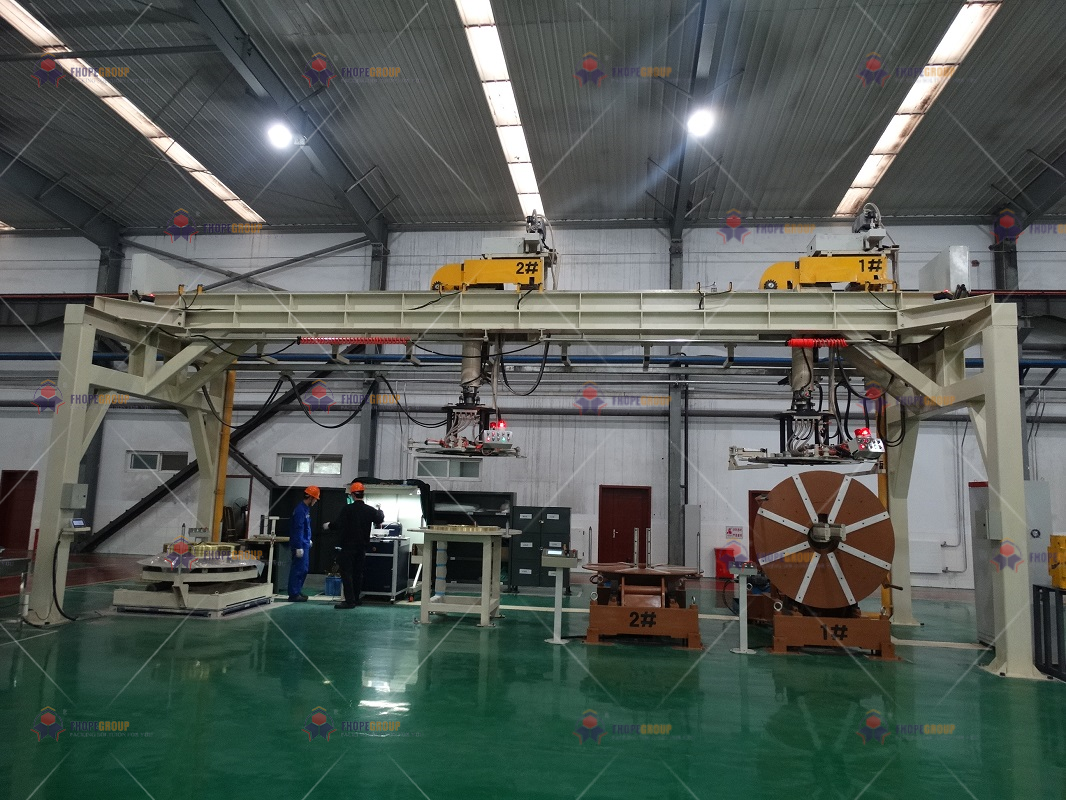
Vertical integration of packaging processes offers a holistic approach to optimizing small-diameter slit coil handling. By combining slitting, handling, packaging, and even warehousing into a seamless, automated system, manufacturers eliminate bottlenecks, reduce manual touchpoints, and gain unprecedented control over the entire coil production lifecycle. This integrated approach minimizes material movement, reduces lead times, and enhances responsiveness to customer demands. Vertical integration is the ultimate strategy for achieving end-to-end efficiency and maximizing the value of your slit coil operations.
Vertical integration in coil packaging means streamlining the entire process from slitting to final packaging within a unified, automated system. This approach significantly reduces material handling, minimizes the risk of damage, and accelerates throughput. Integrated lines often include:
- Direct Transfer Systems: Coils move directly from the slitting line to the packaging line via conveyors or robotic transfer arms, eliminating intermediate storage and handling.
- Automated Packaging Functions: Bundling, wrapping, strapping, labeling, and stacking are all performed automatically in sequence, without manual intervention.
- Centralized Control: A unified control system manages and monitors all stages of the process, providing real-time data and optimizing workflow.
- Data-Driven Optimization: Integrated systems generate valuable data on production flow, efficiency, and quality, enabling continuous improvement and process refinement.
By embracing vertical integration, manufacturers can unlock new levels of efficiency, quality, and responsiveness in their small-diameter slit coil operations, transforming packaging from a cost center into a strategic asset.
Conclusion
Optimizing packaging processes for small-diameter slit coils is not merely about wrapping coils; it’s about implementing a strategic approach that encompasses coil integrity, operational efficiency, and precision engineering. By focusing on inner diameter support, multi-coil bundling, and precision centering systems, manufacturers can significantly enhance their packaging operations. Embracing a vertically integrated approach further amplifies these benefits, creating a seamless and highly efficient production flow. For those seeking to elevate their coil handling and packaging, exploring advanced coil packing line solutions is the key to unlocking a new era of productivity and quality.

